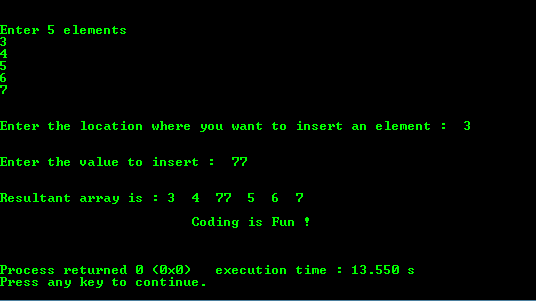Array n no.
Ruby add to array first.
In ruby indexes start at zero.
So the position 1 refers to the second element not the first one.
See also array last for the opposite effect.
If the array is empty the first form returns nil and the second form returns an empty array.
When a size and an optional default are sent an array is created with size copies of default take notice that all elements will reference the same object default.
Returns the first element or the first n elements of the array.
In this article we will learn how to add elements to an array in ruby.
First is a array class method which returns the first element of the array or the first n elements from the array.
So to retrieve the first element from our emails array we append the element s index to the variable using square brackets like this.
Last page remove array elements in ruby.
Writing code in comment.
A 32 a carrot.
There are many ways to create or initialize an array.
The reason for this is.
You can start by creating a new empty array by doing either.
Programmers new to ruby can learn about how to use the each method with an array and a hash by following the simple examples presented here.
First element of the array or the first n elements from the array.
Using the each method with an array object in ruby first create an array object by assigning the array to stooges.
Add array elements in ruby last updated.
Returns a new array.
To access a specific item or element of an array you reference its index or its position in the array.
Ruby arrays grow automatically while adding elements to them.
First page how to access array elements in ruby.
Ruby array class first function last updated.
The first section of the chapter shows the most basic and common way to create an array but there are alternatives in ruby there are always alternatives.
The first position in an array is 0 not 1.
The second form creates a copy of the array passed as a parameter the array is generated by calling to ary on the parameter.
A then you can add values to the array using.

